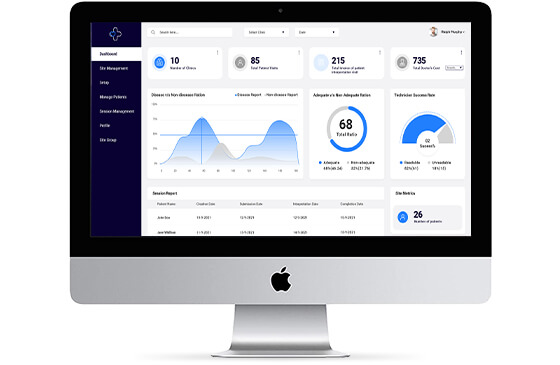Healthcare software development has seen rapid advancements over the past few years, driven by the need for innovative, efficient, and secure solutions that improve patient care, enhance operational efficiency, and meet regulatory requirements. The latest trends in this space reflect the integration of cutting-edge technologies and a growing focus on patient-centered care. Below are some key trends shaping the future of healthcare software development:
1. Artificial Intelligence (AI) and Machine Learning (ML)
AI and ML are transforming healthcare by providing predictive analytics, personalized treatment plans, and automated diagnostics. These technologies allow healthcare providers to analyze large amounts of patient data to identify patterns, predict disease progression, and suggest tailored treatment options. AI-powered software, such as chatbots, also assists in patient engagement, improving care management and patient outcomes. AI in radiology and pathology is enhancing diagnostic accuracy and reducing human error, making it a vital component in healthcare software solutions.
2. Telemedicine and Telehealth Solutions
The COVID-19 pandemic accelerated the adoption of telemedicine, and this trend continues to grow. Healthcare software development has focused on creating robust telehealth platforms that provide virtual consultations, remote patient monitoring, and digital health records. The shift toward telemedicine has increased accessibility to healthcare services, especially in remote areas, and reduced the burden on healthcare facilities. Integrating video conferencing, secure messaging, and real-time data sharing into these platforms ensures better patient-doctor communication and continuity of care.
3. Interoperability and Health Data Integration
Interoperability is becoming a key priority in healthcare software development. The ability to share and access patient data across different systems and healthcare providers is crucial for ensuring seamless care. Developers are focusing on creating software that complies with standards like HL7, FHIR (Fast Healthcare Interoperability Resources), and DICOM to facilitate smooth data exchange. Improved interoperability not only enhances patient outcomes but also reduces administrative costs and duplication of services.
4. Blockchain for Data Security
With the increasing digitization of health records, data security is a major concern. Blockchain technology is emerging as a solution to ensure the integrity and privacy of patient data. Blockchain’s decentralized nature makes it difficult for unauthorized parties to tamper with sensitive health information. It also enables patients to have more control over their health data, allowing them to share it securely with healthcare providers when needed. This trend is set to revolutionize healthcare software development, particularly in areas like electronic health records (EHR) and clinical trial data management.
5. Cloud Computing and SaaS Solutions
Cloud-based solutions are increasingly popular in healthcare software development due to their scalability, flexibility, and cost-effectiveness. Software as a Service (SaaS) platforms allow healthcare organizations to deploy applications quickly without the need for complex IT infrastructure. Cloud computing also supports real-time collaboration, data storage, and backup, making it ideal for healthcare settings that require quick access to patient information. As healthcare organizations continue to embrace cloud technology, we can expect a rise in cloud-native healthcare applications.
Conclusion
The latest trends in healthcare software development are shaping a future where healthcare is more accessible, personalized, and secure. From AI-driven diagnostics to blockchain-enabled data protection, these innovations are paving the way for a more efficient healthcare system that benefits both patients and providers. As these technologies continue to evolve, healthcare software will play an even more critical role in transforming the industry.
